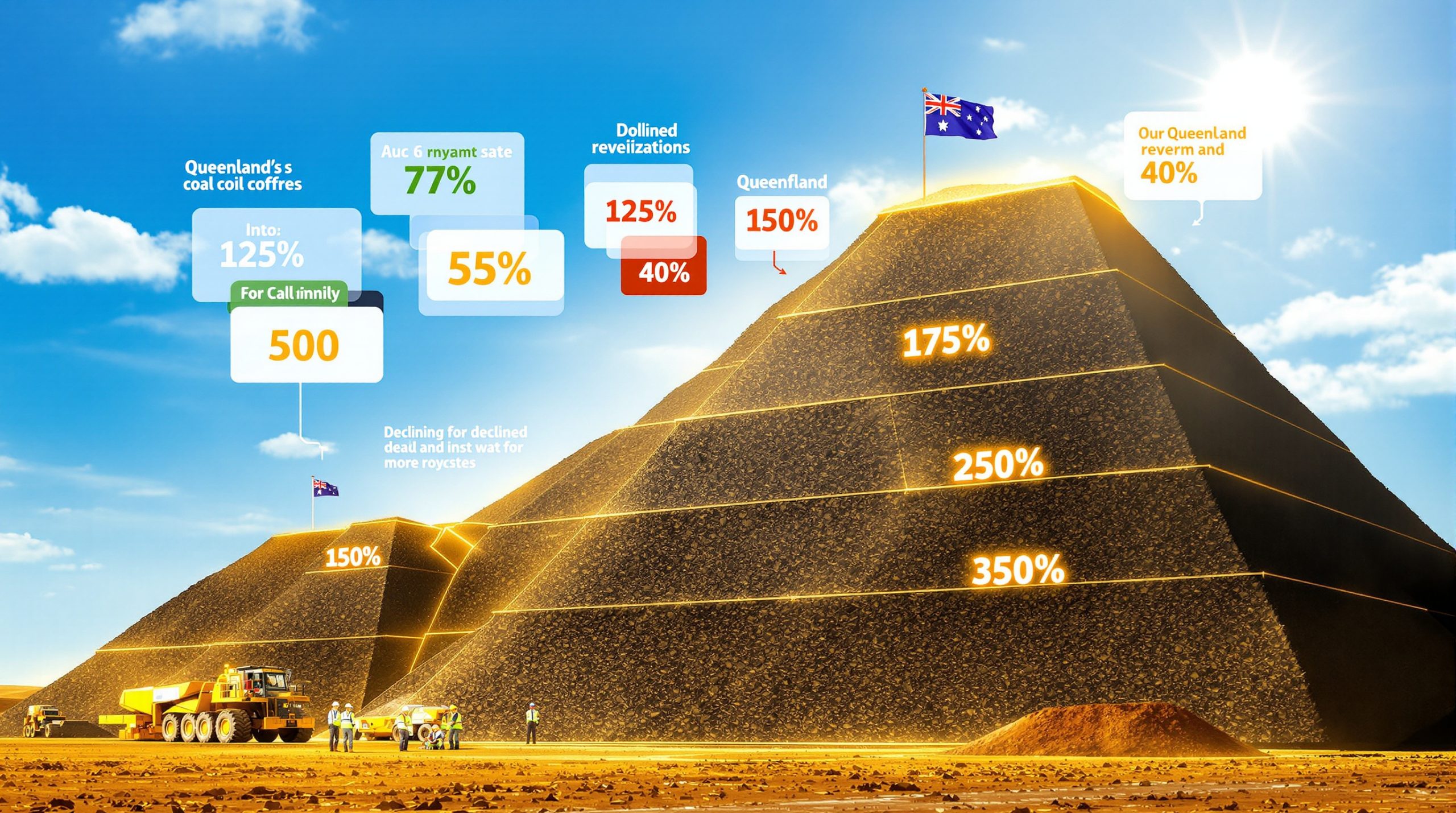What Are the Key Reasons Behind the Core Lithium Finniss Project Termination?
Core Lithium's decision to terminate all offtake agreements for its Finniss project near Darwin represents a strategic pivot in response to challenging market conditions in the global lithium sector. This significant development has reshaped the company's commercial outlook and operational flexibility during a period of intense price volatility.
What Led to the Termination of Offtake Agreements at Finniss?
The termination process unfolded in two distinct phases during 2025, reflecting Core Lithium's evolving response to deteriorating market conditions. The company first dissolved its agreement with Yahua in May, followed by the final termination of its binding lithium supply contract with Ganfeng Lithium in September.
For the Ganfeng agreement, Core Lithium paid $2 million as a settlement to exit the contract completely, a calculated financial decision that management viewed as necessary to gain commercial flexibility. This payment effectively bought the company freedom from all remaining long-term offtake commitments for spodumene concentrate from the Finniss operation.
The timing of these contract terminations aligns with persistent weakness in global lithium markets throughout 2025, with spot prices showing no signs of sustainable recovery. By eliminating these binding agreements, Core has positioned itself to respond more nimbly when market conditions eventually improve.
How Did Lithium Price Fluctuations Impact Project Viability?
The viability of the Finniss project has been fundamentally challenged by a dramatic collapse in lithium commodity prices. According to market data from trading platforms and industry analysts, lithium carbonate prices have declined by approximately 60% from their previous cycle highs, with spodumene concentrate prices experiencing similar downward pressure.
This price deterioration directly impacted Core Lithium's operational cash flow models, compelling the company to suspend mining activities at Finniss earlier in 2025. With production costs potentially exceeding revenue at current price points, continued operations became economically unsustainable.
The severity of this market downturn triggered several strategic responses beyond just contract terminations, including:
- Implementation of aggressive cost-cutting measures across operations
- Restructuring of corporate and site teams to reduce overhead
- Deferral of non-essential capital expenditures
- Launch of a strategic funding process to secure financial stability
Financial analysts note that the Finniss project's economics are particularly sensitive to lithium price movements due to its specific cost structure and grade profile, making these strategic adjustments essential for preserving long-term asset value.
How Does the Termination Affect Core Lithium's Strategic Position?
The elimination of all offtake agreements represents a fundamental shift in Core Lithium's market positioning and future optionality. While the immediate impact includes operational suspension, the longer-term strategic implications may prove advantageous when market conditions improve.
What Opportunities Arise from Unencumbered Spodumene Output?
With 100% of potential future production now unencumbered, Core Lithium has gained maximum commercial flexibility that was previously constrained by binding agreements with fixed pricing mechanisms. This new status creates several strategic advantages:
- Ability to capitalize on spot market premiums when prices recover without volume limitations
- Freedom to negotiate new partnerships with potentially more favorable terms
- Flexibility to pursue opportunistic sales strategies that target premium market segments
- Capacity to align future production schedules with periods of price strength
Market analysts suggest that unencumbered production capacity is increasingly valuable in the current volatile environment, as it allows producers to avoid being locked into fixed-price arrangements during potential future price recoveries.
This commercial freedom is particularly significant given the Finniss project's strategic location just 88 kilometers from Darwin Port, providing logistical advantages for reaching various Asian markets quickly when favorable selling opportunities arise.
How Is Core Leveraging the Break from Long-Term Contracts?
Core Lithium's CEO Paul Brown has positioned the termination of offtake agreements as a strategic enhancement of the company's negotiating position during its ongoing refinancing efforts. By removing these contractual obligations, the company has:
- Improved its appeal to potential strategic investors or partners who may prefer unencumbered production capacity
- Enhanced flexibility in structuring potential restart scenarios without legacy contract constraints
- Created more options for potential asset sales or joint ventures if market conditions warrant such moves
- Strengthened its hand in current refinancing discussions with lenders and potential investors
The company's management views these contract terminations not as a retreat but as a necessary recalibration that improves optionality in a challenging market environment.
| Aspect | Before Termination | After Termination |
|---|---|---|
| Offtake Obligations | Yahua, Ganfeng | None |
| Sales Strategy Flexibility | Limited by contract terms | Maximum market responsiveness |
| Investor Negotiation Power | Constrained by existing obligations | Enhanced by clean commercial slate |
| Price Exposure | Partially hedged by contracts | Full exposure to market upside |
| Restart Timeline Control | Limited by delivery schedules | Completely self-determined |
How Are Equity Raising and Funding Initiatives Impacting the Project?
Parallel to the contract terminations, Core Lithium has initiated significant capital raising efforts to strengthen its financial position during this challenging period. These funding initiatives are critical components of the company's strategy to weather the current market downturn.
What Role Does the $50 Million Equity Raise Play?
Core Lithium's $50 million equity capital raising represents a crucial financial lifeline during the operational suspension period. This capital initiative serves multiple strategic purposes:
- Provides essential working capital during the mining suspension phase
- Funds care and maintenance activities to preserve asset integrity
- Supports ongoing exploration and resource definition work that can enhance future project economics
- Strengthens the company's negotiating position with potential strategic partners or investors
- Creates financial runway to weather continued market weakness without forced asset sales
Industry analysts note that raising equity capital in the current challenging lithium market demonstrates investor confidence in the longer-term value proposition of the Finniss asset, despite near-term price pressures.
The successful completion of this equity raising would significantly reduce refinancing risk and potentially allow Core to be more selective and patient in evaluating strategic alternatives for the Finniss project.
How Is the Finniss Project Positioned for a Potential Restart?
While currently suspended, Core Lithium is actively positioning the Finniss project for an eventual restart when market conditions improve. Several factors contribute to the restart potential:
- The project's proximity to Darwin Port (88 km) provides significant logistical advantages and lower transportation costs compared to more remote operations
- The existing infrastructure investments reduce future capital requirements for recommencing operations
- Core's technical team is using the suspension period to optimize mine planning and processing parameters
- The company is marketing Finniss as a "long-life, low-cost, high-quality" opportunity to potential strategic partners
Mining analysts suggest that lithium projects with existing infrastructure and permits will be the first to benefit from any market recovery, putting Finniss in a potentially advantageous position compared to greenfield developments that face longer lead times and higher initial capital requirements.
The combination of a strengthened balance sheet from the equity raising and complete commercial freedom from offtake agreements may allow Core to time a potential restart to coincide with more favorable market conditions.
What Are the Broader Implications for the Australian Lithium Sector?
The challenges at Finniss reflect wider pressures across Australia's lithium industry, with numerous producers reassessing operations, contracts, and development timelines in response to the same market headwinds.
How Does This Reflect Trends Among ASX Lithium Producers?
Core Lithium's strategic pivots mirror similar moves by other Australian lithium producers facing margin pressures and unsustainable economics. This pattern includes:
- Multiple ASX-listed lithium miners have announced production curtailments or complete suspensions
- Several producers have initiated renegotiations of legacy offtake agreements signed during more favorable market conditions
- Capital expenditure deferrals have become commonplace across the sector
- Consolidation discussions have accelerated as companies seek scale advantages and cost synergies
- Focus has shifted from production volume growth to cost reduction and balance sheet preservation
Mining industry analysts observe that these actions collectively represent a rational supply-side response to current market oversupply conditions, potentially helping to accelerate eventual market rebalancing.
The termination of offtake agreements specifically reflects a sector-wide reassessment of the value of contract certainty versus price upside potential, with many producers now preferring to maintain flexibility rather than lock in prices in a potentially bottoming market.
What Are the Risks and Opportunities for Investors in the Current Environment?
The current lithium market presents a complex risk-reward profile for investors considering exposure to companies like Core Lithium:
Risks:
- Prolonged lithium price weakness could further strain balance sheets across the sector
- Operational restarts may be delayed beyond current market expectations
- Financing conditions could deteriorate if capital markets lose confidence in the sector
- Competition for eventual market share when prices recover will be intense
- Technological changes in battery chemistry could alter long-term demand projections
Opportunities:
- Companies that successfully navigate the downturn will be well-positioned for the eventual recovery
- Unencumbered production capacity provides maximum upside exposure when prices rebound
- Corporate transactions, including mergers or acquisitions, may create value as the sector consolidates
- Strategic partnerships with battery manufacturers or OEMs seeking supply security could emerge
- Discounted asset valuations may represent attractive entry points for long-term investors
Investment advisors suggest that current valuations may already reflect significant pessimism, potentially creating asymmetric upside potential for investors with sufficient patience and risk tolerance to withstand continued near-term volatility. Furthermore, the Australian lithium tax incentives could provide some relief for domestic producers when operations resume.
FAQ: Core Lithium Finniss Project Termination
Why did Core Lithium pay $2 million to end its last offtake?
Core Lithium determined that paying $2 million to terminate the Ganfeng Lithium agreement represented a worthwhile investment to gain complete commercial freedom. This payment effectively removes all constraints on future production decisions, sales strategies, and partnership opportunities, allowing the company to maximize value when market conditions improve. The termination fee should be viewed in the context of potentially much larger value that could be realized through flexible sales strategies in a recovered market.
What does "unencumbered spodumene output" mean for Core?
Unencumbered output means Core Lithium has no pre-existing obligations to deliver specific volumes of spodumene concentrate to particular customers at predetermined prices. This creates maximum flexibility to:
- Sell to the highest bidder in spot markets
- Negotiate new offtake agreements with improved terms
- Adjust production timing to coincide with periods of higher prices
- Pursue strategic partnerships without legacy contract complications
- Consider more fundamental corporate transactions if advantageous
This flexibility is particularly valuable in volatile commodity markets where agility can significantly impact realized prices and overall project economics.
How do current lithium prices compare to previous highs?
Current lithium prices have experienced a dramatic correction from previous cycle peaks. Specifically:
- Lithium carbonate prices have declined approximately 60% from their 2022 highs
- Spodumene concentrate (6% Li₂O) prices have similarly contracted from over $5,000/tonne to current levels below $2,000/tonne
- This price decline has compressed operating margins across the entire lithium value chain
- Price volatility has increased, with periodic sharp movements in both directions
Industry analysts note that while current prices represent a significant correction, they remain above the long-term historical averages seen before the previous price cycle began. Alternative sources like lithium brine extraction technologies could also influence future supply dynamics.
What is the outlook for the Finniss project?
The Finniss project's future depends primarily on lithium market conditions and Core Lithium's success in strengthening its financial position. Key factors influencing the outlook include:
- The timing and strength of any lithium price recovery
- Successful completion of the $50 million equity raising
- Potential strategic partnerships or investment that may emerge
- Optimization work conducted during the suspension period
- The company's ability to maintain a competitive cost structure
While currently suspended, Finniss maintains significant advantages including existing infrastructure, proximity to port facilities, and a skilled workforce that could facilitate a relatively rapid restart when market conditions warrant.
What Comes Next for Core Lithium and Finniss?
The path forward for Core Lithium and the Finniss project will be shaped by several interconnected factors, including market conditions, funding success, and strategic partnerships. This transition period represents both challenge and opportunity.
The termination of all offtake agreements marks a definitive strategic pivot designed to maximize future flexibility and optionality. By freeing itself from these contractual obligations, Core has positioned the Finniss project as a clean slate opportunity that can be rapidly reconfigured to match evolving market conditions.
The $50 million equity raising, if successful, will provide crucial financial stability during this transitionary period. This strengthened balance sheet will give management breathing room to evaluate multiple strategic alternatives without immediate financial pressure forcing suboptimal decisions.
Prospective investors, partners, or potential acquirers will likely view the unencumbered nature of future Finniss production positively, as it removes complications that would otherwise need to be addressed in any transaction. This clean commercial structure could accelerate partnership discussions or asset transactions if Core chooses to pursue such options.
Industry observers suggest that lithium market fundamentals may begin improving in 2026-2027 as electric vehicle adoption continues to grow globally while current supply rationalization efforts help rebalance the market. This potential timing aligns with the window created by Core's current financial initiatives.
The company's strategic decisions in coming quarters will significantly influence whether Finniss emerges as a standalone operation benefiting from market recovery, becomes part of a larger consolidated producer through M&A, or evolves through strategic partnership with downstream battery manufacturers seeking supply security. Additionally, exploring opportunities in Argentina lithium insights or geothermal lithium extraction could provide alternative growth pathways should the company look to diversify its asset base.
As the lithium industry continues to mature, companies with production-ready assets like Finniss may become increasingly attractive to downstream partners seeking to secure supply for battery-grade lithium refinery operations in growing markets.
Disclaimer: This analysis contains forward-looking statements about market conditions, operational strategies, and potential outcomes. Actual results may differ materially from these projections due to various factors including commodity price movements, regulatory changes, technical challenges, or broader economic conditions. Investors should conduct their own due diligence and not rely solely on this information for investment decisions.
Interested in Spotting the Next Major Lithium Opportunity Early?
While Core Lithium navigates challenging market conditions, Discovery Alert's proprietary Discovery IQ model helps investors identify significant ASX mineral discoveries in real-time, turning complex data into actionable insights before the broader market catches on. Explore how major discoveries can lead to substantial returns by visiting Discovery Alert's dedicated discoveries page.




